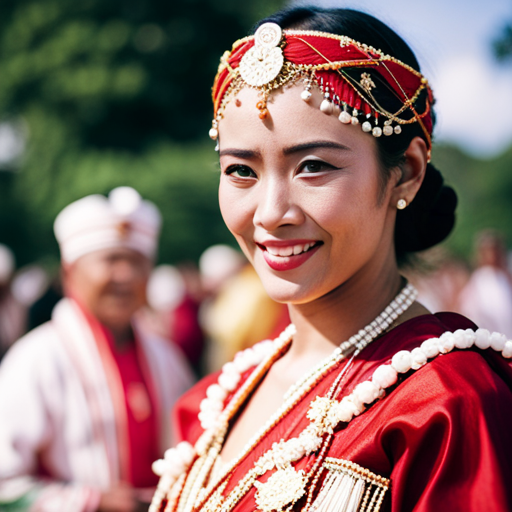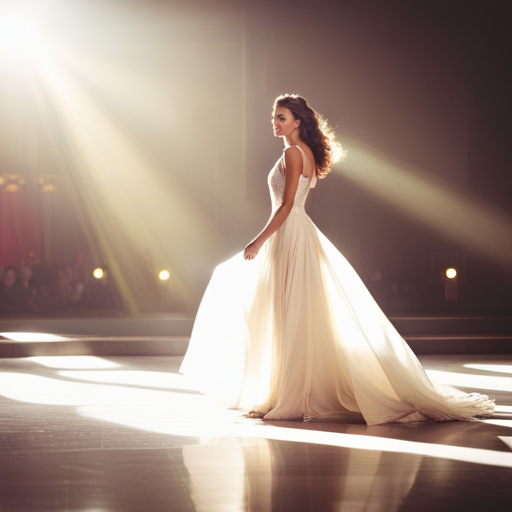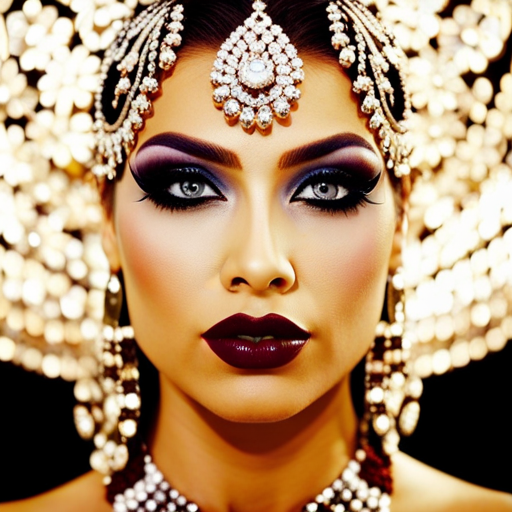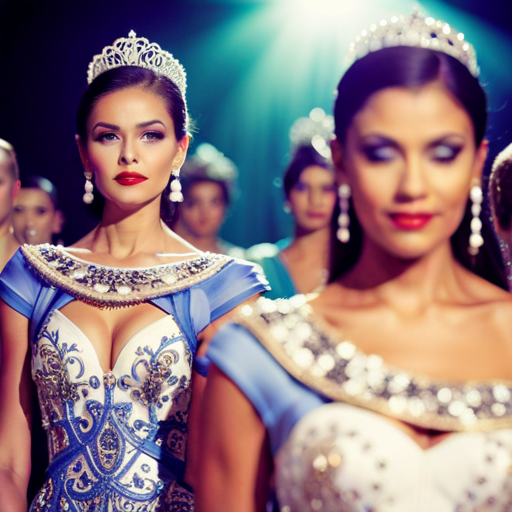The Role of Costume Design in National Costumes

Step back in time and explore the intricate artistry and cultural significance of national costumes.
From historical symbolism to modern innovations, costume design plays a pivotal role in preserving and representing cultural identities.
This article delves into the rich tapestry of regional influences, fabric choices, and color symbolism that contribute to the captivating world of national costumes.
Join us as we unravel the complexities and beauty of costume design in this fascinating exploration.
Historical Significance of Costume Design
The historical significance of costume design in national costumes can be traced back to the rich cultural traditions and societal norms of different periods in history. The evolutionary changes in national costumes reflect the dynamic nature of cultural practices and the influence of historical events. Traditional elements are embedded in the designs, showcasing the cultural significance and artistic expression of a particular community. These costumes serve as a visual representation of a society’s values, beliefs, and rituals, allowing for a deeper understanding of its heritage and customs.
Throughout history, national costumes have been influenced by various factors such as migration, trade, and colonization, leading to a fusion of styles and designs. This amalgamation of different cultural elements has contributed to the evolution of costume design, reflecting the ever-changing nature of societal dynamics. The artistic expression found in national costumes not only encapsulates the creativity of a community but also serves as a means of cultural preservation.
As we delve into the historical significance of costume design, it becomes evident that these garments hold more than just aesthetic value; they are symbolic representations of a society’s identity and history. This symbolism and cultural representation will be further explored in the subsequent section.
Symbolism and Cultural Representations
The symbolism and cultural representations in national costumes play a crucial role in representing a country’s heritage and traditions. By incorporating cultural symbols into their designs, costume designers can convey the values, beliefs, and history of a particular community or nation.
These representations serve as an important visual language that reflects the unique identity and pride of a culture.
Cultural Symbols in Costumes
An exploration of the significance of cultural symbols in national costumes reveals the intricate layers of symbolism and cultural representations embedded within each design.
Cultural symbols in costumes serve as a reflection of deep-rooted cultural traditions, encapsulating the essence of a community’s artistic expressions. These symbols often convey stories of heritage, spirituality, and societal values, serving as a visual representation of a community’s identity.
From the vibrant patterns of African textiles to the intricate embroidery of traditional Chinese attire, cultural symbols in costumes showcase the diversity and richness of global heritage. The use of specific colors, motifs, and materials in national costumes reflects the unique narrative of each culture, fostering a sense of pride and belonging among its people.
Understanding the cultural symbols in costumes is integral to appreciating the depth of meaning and history woven into their designs, ultimately contributing to the perpetuation of national heritage.
Representing National Heritage
Exploring the representation of national heritage through symbolism and cultural representations in costume design unveils the depth of historical narratives and societal values embedded in traditional attire. National costumes serve as a visual manifestation of a country’s identity, reflecting its unique traditions and values. The use of specific colors, patterns, and motifs often conveys deep-rooted cultural symbolism, representing aspects such as spirituality, unity, or historical events. Moreover, traditional craftsmanship plays a pivotal role in national costumes, as the meticulous techniques and materials used are often passed down through generations, preserving the authenticity and heritage of the attire. The table below provides examples of how different countries represent their national heritage through costume design.
| Country | Symbolism |
|---|---|
| Japan | Kimonos symbolize elegance and refinement |
| India | Sari colors and patterns represent different regions |
| Scotland | Tartan patterns signify clan affiliation |
| Mexico | Embroidered designs depict indigenous heritage |
Understanding the significance of these elements is crucial in appreciating the national identity encapsulated in traditional costumes.
Moving forward, the discussion will delve into the influence of regional distinctions on costume design.
Regional Influences on Costume Design
Regional influences shape the artistic expression and cultural significance of costume design in national costumes. These influences are reflected in the traditional elements, materials, and techniques used in the creation of national costumes. The rich diversity of regional traditions, historical influences, and local craftsmanship contributes to the unique aesthetic and symbolic meanings of national costumes. The fusion of various regional styles and traditional elements results in a tapestry of cultural heritage, representing the unity within diversity.
Moreover, regional influences are not confined to the past; they also inspire modern interpretations of national costumes. Contemporary costume designers often draw inspiration from regional art, architecture, and folklore to create innovative designs that honor tradition while embracing modernity. By incorporating regional influences, designers infuse national costumes with a sense of authenticity and timelessness, ensuring that they remain relevant and meaningful in today’s globalized world.
This dynamic interplay between regional influences and modern interpretations underscores the enduring importance of costume design in preserving and celebrating cultural identity. Ultimately, regional influences serve as a cornerstone in the creation and evolution of national costumes, embodying the spirit of a nation’s heritage and diversity.
Impact of Fabric and Textile Choices
The fabric and textile choices play a pivotal role in shaping the aesthetic and cultural significance of national costumes, reflecting the diverse regional influences that contribute to their symbolic meanings and artistic expression.
Fabric choices are deeply rooted in traditional techniques, with each region boasting its own distinct methods of weaving, dyeing, and embellishing textiles. These techniques are passed down through generations, preserving cultural meanings and artistic expressions within the fabric itself.
The selection of textiles also speaks to the historical and environmental context of a particular region, with certain fabrics being favored for their practicality and adaptability to local climates.
Moreover, the fabric and textile choices in national costumes often serve as a visual representation of the values and beliefs held within a community, showcasing intricate patterns, colors, and motifs that hold specific cultural significance.
Furthermore, the fabric choices can also denote societal roles and hierarchy, with certain textiles being reserved for ceremonial attire or specific social classes.
Role of Color in Conveying Meanings
Color plays a significant role in conveying cultural, social, and historical meanings within national costumes, reflecting the rich tapestry of traditions and values embedded in the fabric of these garments.
The use of color in national costumes is deeply rooted in color psychology and cultural traditions. Different colors hold various symbolic meanings across different cultures. For example, in many East Asian countries, red symbolizes good fortune and joy, while in some African cultures, blue is associated with spirituality and protection.
The choice of colors in national costumes often reflects the natural environment, climate, and the historical context of the region. For instance, the vibrant and diverse colors found in traditional Indian clothing are a reflection of the country’s rich cultural heritage and its deep-rooted traditions.
Furthermore, the use of specific colors in national costumes can also denote societal roles, such as the distinction between royalty and commoners.
Therefore, the selection and combination of colors in national costumes are not merely aesthetic choices but carry profound cultural significance and historical narratives.
Contemporary Adaptations and Innovations
Contemporary adaptations and innovations in national costumes reflect the evolving societal values and technological advancements, shaping the way traditional designs are reimagined and integrated into modern contexts.
Contemporary interpretations of national costumes often involve the infusion of traditional elements with modern aesthetics, creating a bridge between heritage and innovation. This fusion not only preserves cultural identity but also ensures its relevance in today’s world.
Some key aspects of contemporary adaptations and innovations in national costumes include:
- Integration of sustainable materials and eco-friendly production processes
- Incorporation of wearable technology to enhance functionality
- Collaboration with contemporary fashion designers to bring a fresh perspective
- Exploration of new dyeing and printing techniques for unique visual effects
- Adapting traditional silhouettes to suit modern lifestyle and movement
These innovative approaches demonstrate how national costumes evolve with the times while maintaining their cultural significance. By embracing contemporary interpretations and integrating traditional elements, national costumes continue to thrive as a meaningful expression of identity and heritage in today’s diverse and dynamic world.
Frequently Asked Questions
How Has Globalization Affected the Traditional Designs of National Costumes?
Globalization has significantly impacted traditional designs of national costumes through cultural exchange and the influence of global fashion trends. This has led to a fusion of traditional and modern elements, reflecting the evolving nature of national costume designs.
What Are Some Common Misconceptions About National Costumes and Costume Design?
Common misconceptions about national costumes and costume design include cultural appropriation and lack of consideration for fashion trends. It is important to recognize the cultural significance and historical context behind national costumes, and the evolving influence of fashion.
How Do Economic Factors Impact the Production and Design of National Costumes?
Economic factors significantly impact the production and design of national costumes. They influence material choice, manufacturing processes, and design complexity. Globalization also plays a role, affecting traditional designs and driving innovation in response to evolving market demands.
What Role Do National Costumes Play in Preserving Cultural Heritage and Identity?
National costumes serve as tangible expressions of cultural heritage and identity, playing a pivotal role in preserving traditions amidst globalization. Their traditional designs reflect historical narratives, political movements, and social influences, encapsulating the essence of a nation’s identity.
How Do Political and Social Movements Influence the Design and Perception of National Costumes?
Political and social movements significantly influence the design and perception of national costumes. They can incorporate symbolism, reflect cultural appropriation, and respond to fashion trends. These factors shape the evolving narrative and representation of national costumes.
Conclusion
In conclusion, the intricate and diverse world of national costume design reflects the rich historical and cultural significance of different regions.
Through the use of symbolism, fabric choices, colors, and regional influences, costume design plays a crucial role in representing and preserving the traditions and identities of various cultures.
As contemporary adaptations and innovations continue to evolve, the role of costume design in national costumes remains a powerful symbol of cultural heritage and identity.



